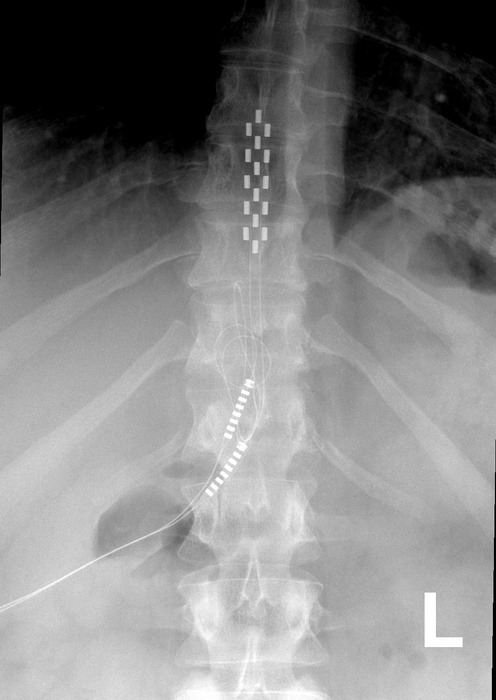VA Tweet Recommends Spinal Cord Stimulators While Spreading Opioid Phobia
/By Crystal Lindell
A recent post on X (formerly Twitter) from the U.S. Department of Veterans Affairs inadvertently highlights one of the ways that opioid phobia is actively causing a lot of harm.
On Dec. 31, 2024 the VA made this post on X:
“Spinal cord stimulation implantation helps Veterans suffering from chronic pain improve their quality of life without narcotics.”
The post links to a VA News article headlined: "Columbia VA performs first spinal cord stimulation implantation."
About 50,000 stimulators are implanted every year in the U.S., but this was the first time the VA hospital in Columbia, South Carolina had done one. There are two major problems with the VA’s post and the related article:
Spinal cord stimulators are often ineffective and sometimes so dangerous they have to be removed.
Recommending them as a method of treatment that can be done “without narcotics” serves to demonize prescription opioids, which are both relatively safe and effective. The use of the word “narcotics” rather than “opioids” also feels intentional, as narcotics is commonly used by law enforcement.
Overall, the VA’s post and the related linked article are emblematic of a now pervasive attitude among medical professionals: Any treatment that reduces opioids must be good. And if that treatment is bad, well, it’s still good.
Before we go further into the research about why spinal cord stimulators (SCSs) are so problematic, it's important to explain what they actually are.
Stimulators are surgically placed near the spine, with a small battery also placed under the skin, usually near the buttocks or abdomen. Patients with back, hip or leg pain then use a remote control to send mild electric signals into their spinal nerves to block pain signals to the brain.
A quick tip as someone who has a lot of experience with medical interventions: Anytime a doctor says they want to start messing with your spine, you should be wary.
‘Potential for Serious Harm’
Don’t take my word for it though. There’s tons of research highlighting the negative effects of SCSs.
As an Associated Press investigation in 2018 found, spinal cord stimulators account for the third-highest number of medical device injury reports to the FDA, with over 80,000 incidents flagged over the previous decade. The AP also found that the FDA had more than 500 reports of people with stimulators who died.
In 2022, a study published in the Journal of Patient Safety analyzed adverse effects involving SCSs reported to the Australian Therapeutic Goods Administration. That research found 520 adverse events, with most rated as severe (79%) or life-threatening (13%).
“Spinal cords stimulators have the potential for serious harm, and each year in Australia, many are removed. In view of the low certainty evidence of their long-term safety and effectiveness, our results raise questions about their role in providing long-term management of intractable pain,” researchers concluded.
Additionally, a January 2024 article from the American Academy of Family Physicians headlined: "Despite Weak Evidence, Spinal Cord Stimulators Are Big Business” also highlights their shortcomings.
In it, author Kenny Lin, MD, writes: "These devices come with a high price tag ($30,000) and potential complications that include electrode migration, hematoma formation, infection, spinal cord injury, and cerebrospinal fluid leak."
Lin also notes that in a 2020 letter to health care providers, the FDA reported that over a four year period, it received nearly 108,000 reports involving SCSs, including 428 deaths, nearly 78,000 injuries, and over 29,000 instances of a device malfunction.
That seems like an unacceptably high rate of unintended effects for a device with modest benefits.
It’s disappointing, but not surprising, to see the VA perpetuate dangerous medical information promoting spinal cord stimulators, especially as some sort of magical alternative to “narcotics.”
Messaging from government agencies holds power and needs to be used responsibly. I would hate for a veteran to see that post on X, decide to get a spinal cord stimulator, and then end up with adverse effects. I’d also hate for any VA doctors to see that post and conclude that they should be pushing the stimulators over something like hydrocodone.
The whole situation reinforces how far we have strayed from rational opioid policy, and how far we have to go if we ever want to have one. At this point, I’m not sure I’ll live long enough to see that happen.










